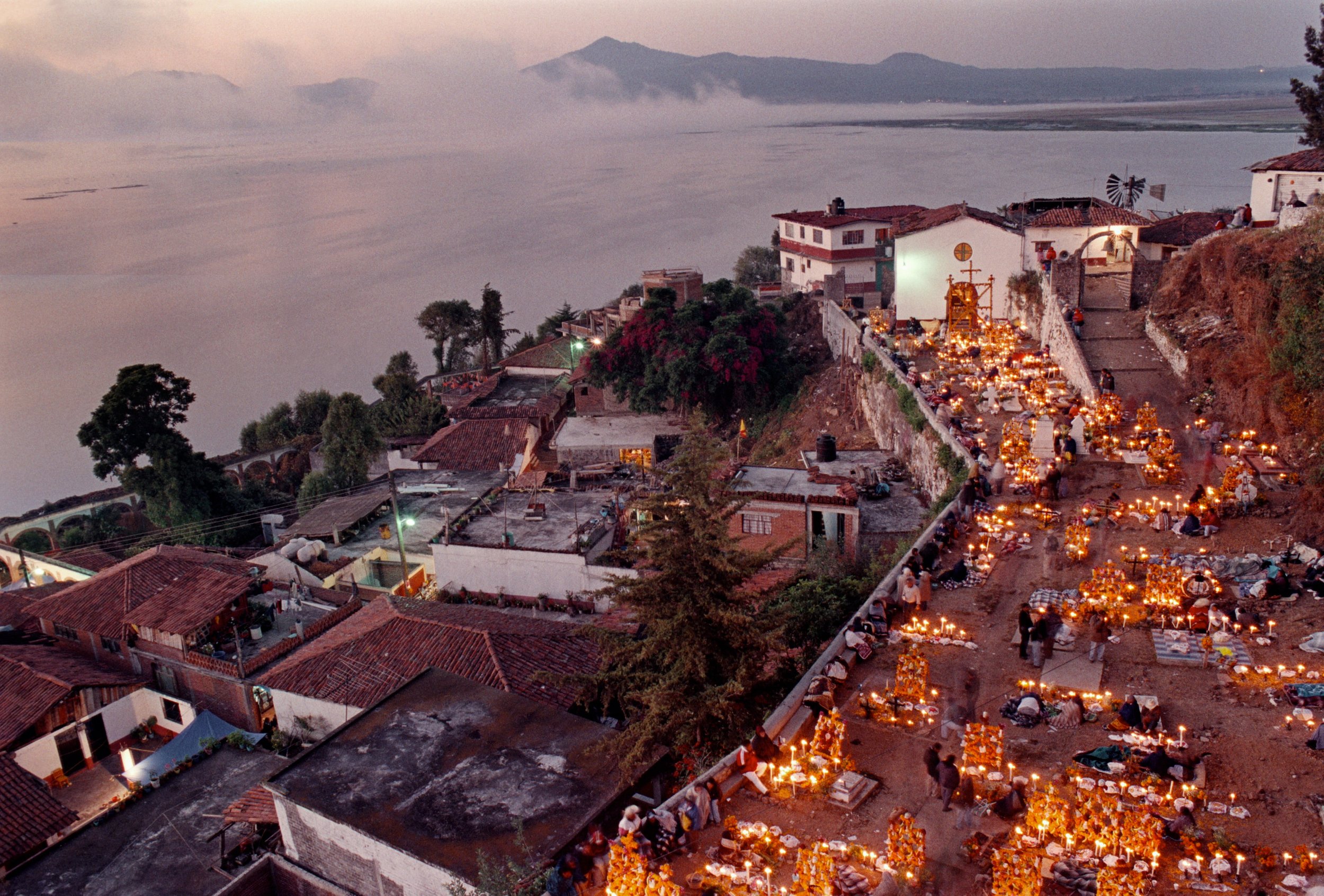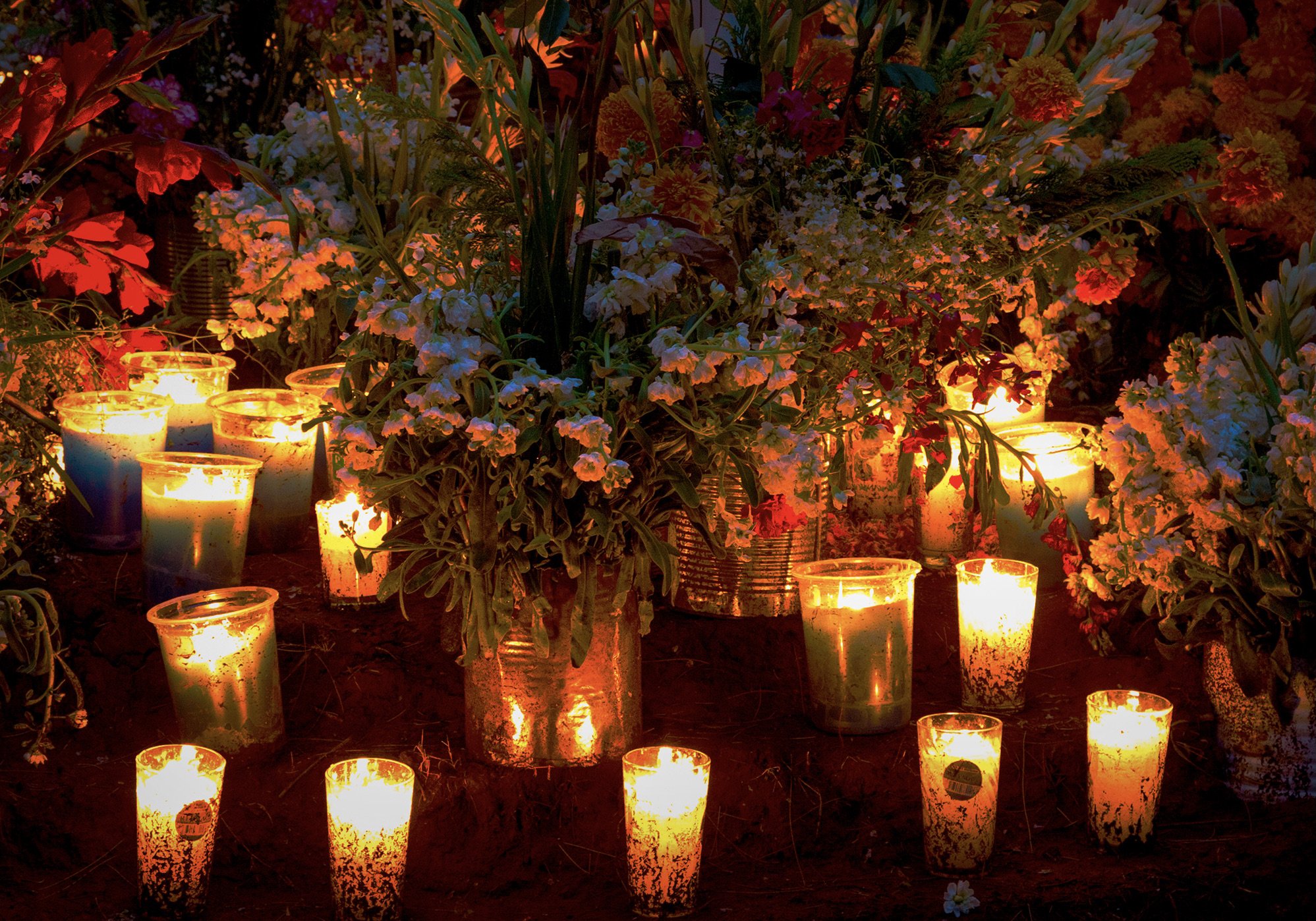Día de Muertos: a celebration to honor the lost and ground the living
Mexican writer, Susana Guardado y del Castro, delves into the traditions of Día de Muertos and explains how the celebration connects us to the loved ones of our past and grounds us in the present moment.
Traditions are lively opportunities to express our identity, rediscover our values, embrace our heritage, and cherish memories. In Mexico, our culture is steeped in tradition, ritual and celebration, and Día de Muertos is one such tradition that lies at the core of our identity.
Día de Muertos is a holiday celebrated every November 1st and 2nd in Mexico. It’s a time to gather with family and friends to honor those no longer living, serving as a chance to honor our ancestors through beautiful and devotional rituals.
Yet unlike so many other rituals surrounding death, Día de Muertos is a joyful, exuberant, celebratory day. Families tidy and decorate their loved ones’ gravestones, bring them sentimental trinkets or objects they loved as an offering, and build ofrendas, or altars, to honor the dead.
It’s a tradition that makes me proud to be Mexican. And in Calm’s Sleep Story, A Día de Muertos Story, I offer a glimpse into the celebration and symbolism behind this important holiday. You can listen to the Sleep Story here.
What are the traditions of Día de Muertos?
Every family celebrates Día de Muertos differently, thanks to their own inherited customs passed down from one generation to the next. Some make a delicious mole as an offering, using family recipes that lovingly transform local ingredients into a rich combination of sweet and savory flavors: local dried chiles, cacao brought from low tropical lands, and seeds and spices harvested from their own backyards.
Whatever creative and diverse ways each home uses to celebrate—big, small, simple, or dazzling—it is the ofrenda that takes center stage. The core element of any Día de Muertos celebration, ofrendas (offerings placed on an altar) are made up of everything from fragrant cempasúchil flowers, and colorful cut-paper flags known as papel picado, to candles intended to guide the dead and grant them safe passage, salt to purify their bodies, and water to quench their thirst after their long journey. There’s also copal incense to keep bad spirits away, sweet pan de muerto bread, ornately decorated sugar skulls, and pictures of our loved ones.
Preparing for the celebration
The connection between the living and the dead is key to understanding Día de Muertos. We believe that as long as we remember and honor those who are gone, they will still be with us. And every November 1st and 2nd, we not only connect to the past, but also ground ourselves in the immediateness of the present moment.
Whenever I set the ofrenda, I feel calm and connected. I let my heart lead the way and guide every action in this ritual. First, I arrange the golden cempasúchil flowers in my mother’s flowerpots. Then, I gently wash our exquisite, white deshilado tablecloth and hang it out to dry. Finally, I light the candles at the altar with care, hoping for bright flames that’ll last the night.
As I hold my abuelo’s photo in my hands, I say a prayer and place it among the things he liked the most: the books he loved to read, the mole we prepared earlier, piles of warm tortillas and his favorite tequila. I lay abuela’s picture next to the pan de muerto, chocolate with cinnamon, and a handful of anise candies. Tía Alicia gets her favorite treats—flan and tacos—while my cousin, Luis, is presented with tostadas and his guitarrita… Oh, how he’d love to play it again!
Afterwards, my family and I make our way to the panteón. On Día de Muertos, the cemetery is brimming with families, flowers, and candles. The night is full of the sound of prayers, songs, stories and even mariachis a few tombstones away. Some families bring food and drink, while others come with flowers and candles. Whatever they have brought, I know that all of us are putting a piece of our hearts into the altares above the tombs.
How can your own traditions enrich your life?
Traditions are the cornerstones of our identity; they ground us by reminding us of where we came from and who we are. Día de Muertos makes me feel that I belong and that I’m part of something bigger. I take comfort in the knowledge that even if my name is forgotten, the children of my great-grandchildren will keep the traditions of Día de Muertos alive. They’ll understand that the butterflies that flutter through the night sky are really souls on their way to rest, and they’ll recognize that eating the meals prepared for the dead is a way of communing with their ancestors.
As November dawns and Día de Muertos returns, it’s time to add another thread to the inextricable yarn that comprises the fabric of this holiday: kindness, reverence, unity, and nostalgia. It’s a time to rekindle our love for people both past and present, to reset the mind, and set aside daily concerns so we can breathe, feel, let go, and simply be.
So tonight, I invite you to tune into A Día de Muertos Story and drift off to a peaceful slumber surrounded by the enchanting sounds of Día de Muertos. With any luck, you’ll dream of your own family’s most joyful and meaningful traditions.












